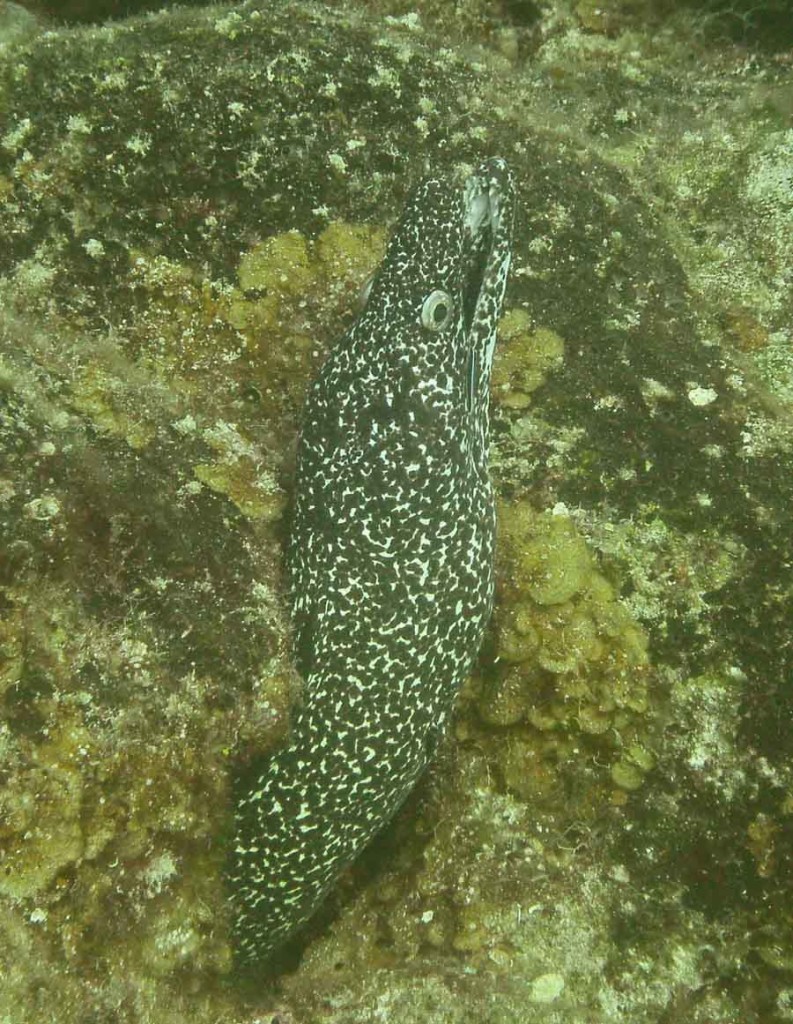Computers and Morays
by wjw on June 17, 2014
 Here’s the biggest spotted moray I’ve ever seen. His head and neck seemed kinda large, and then I saw the huge tail folded up clear on the other side of the coral lump he was hiding in, and I was deeply impressed. He’s not as big as some of the green morays I’ve seen, but for a spotty guy he was huge.
Here’s the biggest spotted moray I’ve ever seen. His head and neck seemed kinda large, and then I saw the huge tail folded up clear on the other side of the coral lump he was hiding in, and I was deeply impressed. He’s not as big as some of the green morays I’ve seen, but for a spotty guy he was huge.
In fact I thought he might be so big that he was stuck in the coral, because he didn’t move at all while I floated around him taking pictures.
When I was on Sun Dancer I did five dives nearly every day, and that was made possible only by dive computers. Before computers we all had to use charts to calculate our nitrogen exposure, and those charts were, as it turned out, very very conservative. If you dove to 90 feet, say, and the dive lasted 45 minutes, the charts assumed you spent the entire dive at 90 feet, and rated your nitrogen exposure accordingly. (Nitrogen gives you the bends. It’s a baad, baad gas.) In fact, in my example, if you spent 45 minutes at 90 feet, you were dead. Or at least severely bent.
Back in the day, we’d do two dives in the morning, and that was pretty much that. (Maybe you’d get a night dive after you’d outgassed for a while.)
But now, because your dive computer will calculate your nitrogen exposure with great precision, you can spend a lot more time under the water. It probably makes possible the whole industry of live-aboard dive boats like Sun Dancer— in fact to dive on Sun Dancer you were required to have a computer.
The computers make it possible for us to make five dives per day, and still stay safe, and to meet more of our finny friends, like Mr. Spotty here.
Previous post: Land Legs
Next post: Majeure Release
